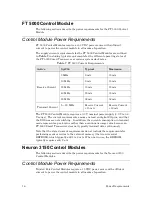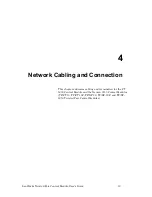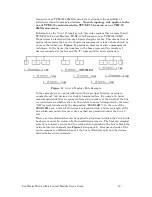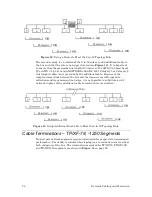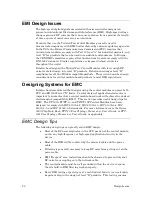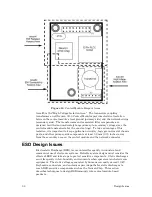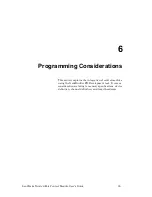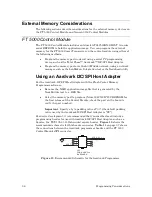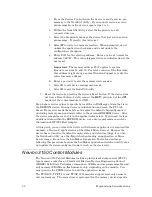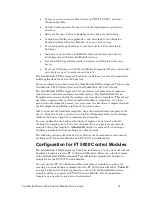
LonWorks Twisted Pair Control Module User's Guide
29
that grounding and enclosure design questions are addressed early
enough to avoid most last-minute changes (and their associated schedule
delays).
It is possible for a plastic enclosure to be used with Twisted Pair Control Modules
in level “B” applications in some specialized configurations. Because external
cables must be kept away from the “RF hot” keepout area on the modules (see
on page 32), the product configuration must constrain the routing of
cables so that they cannot pass across the surface of the plastic enclosure near
the module. During FCC EMI testing, cable position is typically varied to
generate maximum emission levels (within constraints of normal product usage).
For Neuron 3150 Control Modules, the three standoff holes are generally not
needed for mechanical support, but the hole nearest connector
P2
is important
for EMI grounding of the control module. Best results are achieved by a solid
ground connection from the control module to the application mother board and
to a metalized enclosure using the
P2
standoff.
The Twisted Pair Control Modules include adequate filtering on the network data
communication lines for most device designs to meet level “B” emission limits. In
rare cases, such as designs including circuits with extremely fast edges,
additional noise attenuation is required. In such cases it may be necessary to use
a common-mode choke connected in series with the data communication lines
adjacent to the device’s external network connector. Common-mode chokes can
provide an additional 10 to 15 dB of EMI attenuation over the 30 to 500 MHz
range. A choke adds a few pF of differential capacitance to the data
communication lines, and therefore reduces network performance and can affect
interoperability. In general, application designs should not require a common-
mode choke.
FT 5000 Control Module PC Board Layout Guidelines
Electrostatic discharge (ESD) and electromagnetic interference (EMI) are two of
the most important design considerations when laying out the PCB for a device.
Tolerance of ESD and other types of network transients requires careful layout
for power, ground, and other device circuitry. In general, ESD currents return to
Earth ground or to other nearby metal structures. The device’s ground scheme
must be able to pass this ESD current between the network connection and the
device’s external ground connection without generating significant voltage
gradients across the device’s PCB. The low-inductance star-ground configuration
accomplishes this task. The star-ground configuration conducts transients out of
the device with minimal disruption to other function blocks.
The following list describes some of the general features of a careful PCB design
layout for an FT 5000 Control Module:
Star-Ground Configuration:
The various blocks of the device that directly
interface with off-board connections (the network, any external I/O, and
the power supply cable) should be arranged so that the connections are
together along one edge of the PCB. This arrangement allows any
transient current that comes in by one connection to flow back out of the
device by one of the other connections.
If connection is made between the PCB ground and a metal enclosure,
that connection should be made using a low-inductance connection (like a
short standoff) in the center of the star ground. The center of the star
Содержание LONWORKS FT 5000
Страница 1: ...LONWORKS Twisted Pair Control Module User s Guide 078 0015 01F...
Страница 18: ...10 Mechanical Considerations Figure 5 Neuron 3150 Control Module Mechanical Footprint...
Страница 20: ...12 Mechanical Considerations Figure 8 Vertical Component Profile for the Control Modules...
Страница 22: ......
Страница 26: ......
Страница 34: ......
Страница 55: ...www echelon com...


